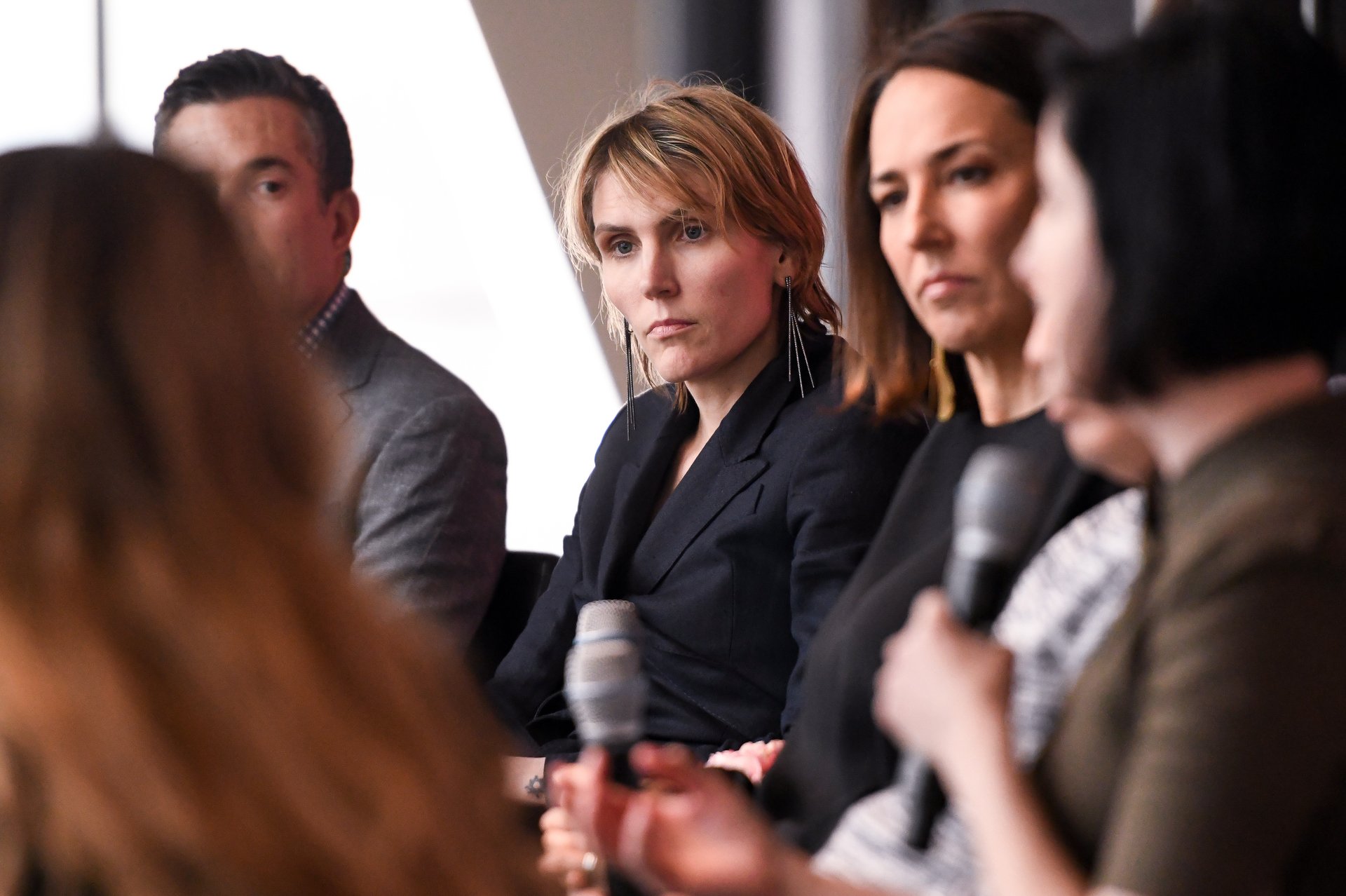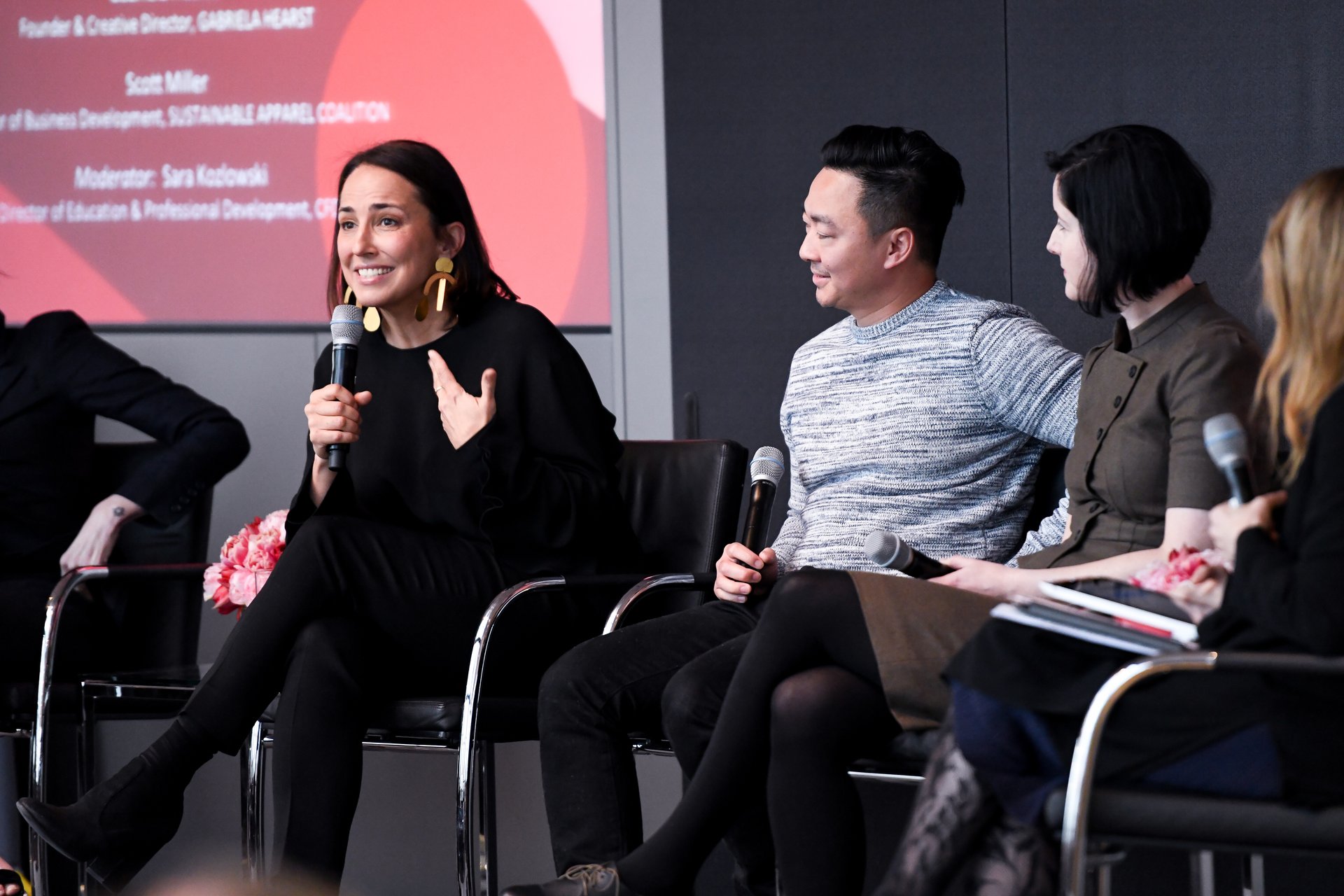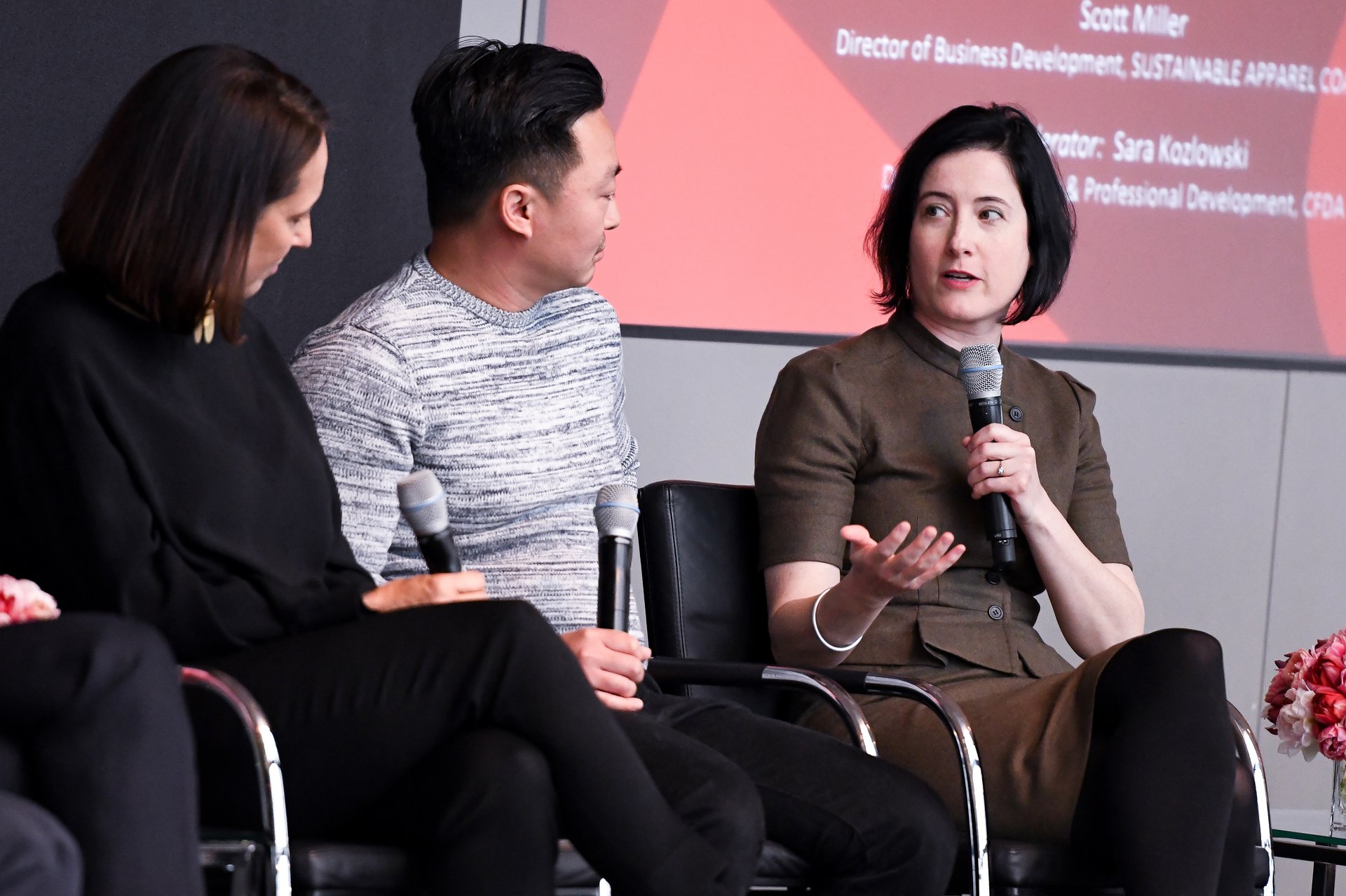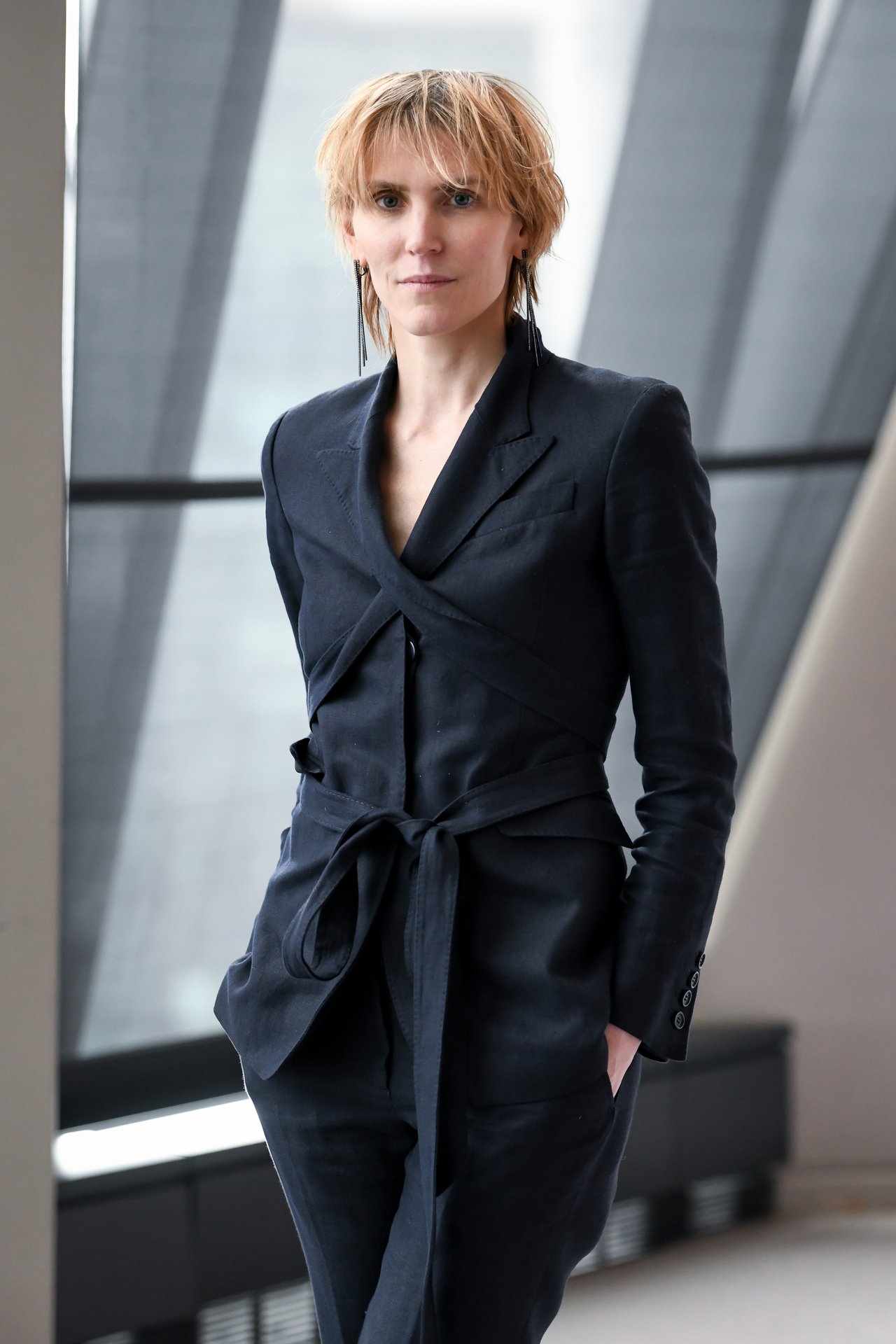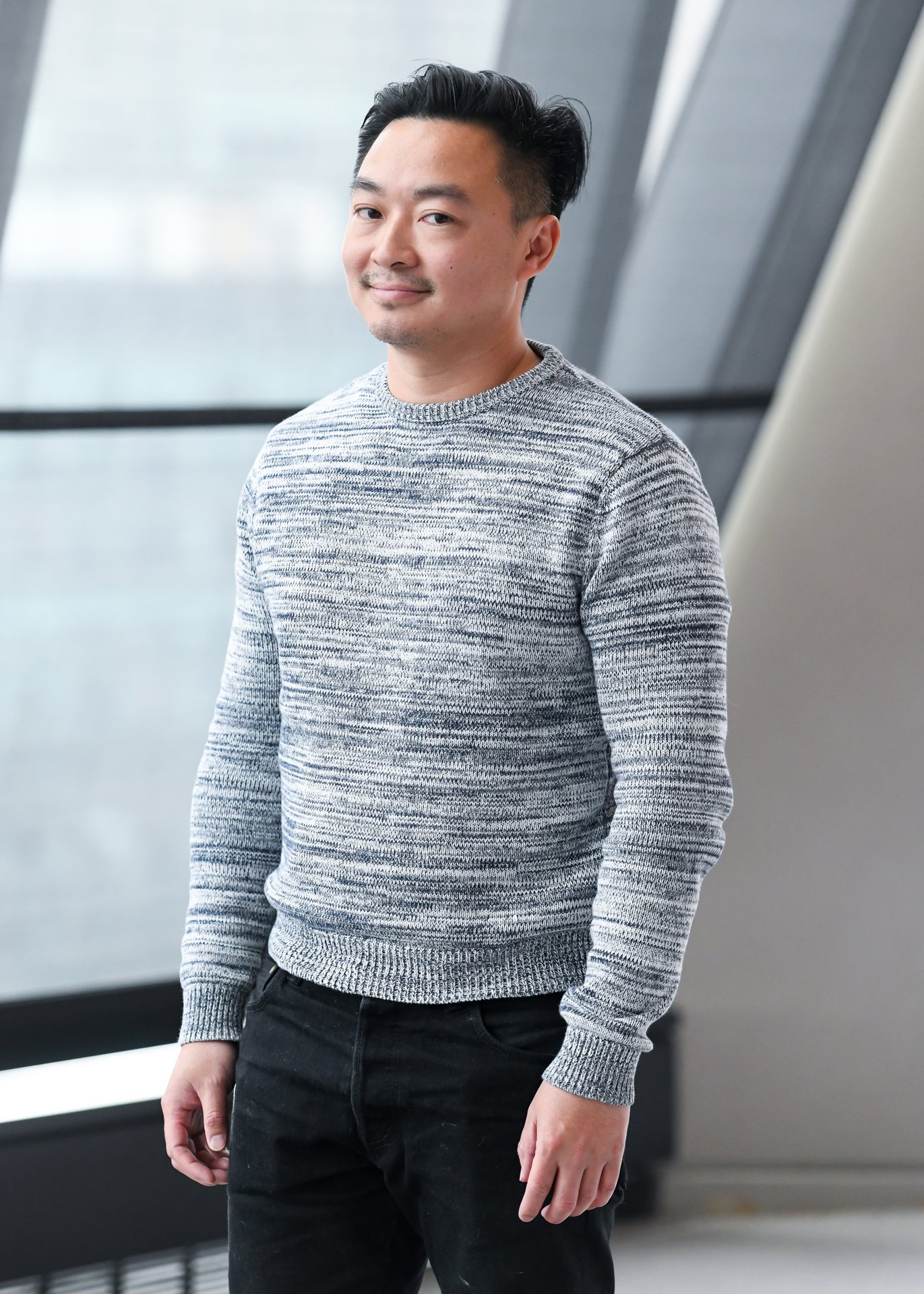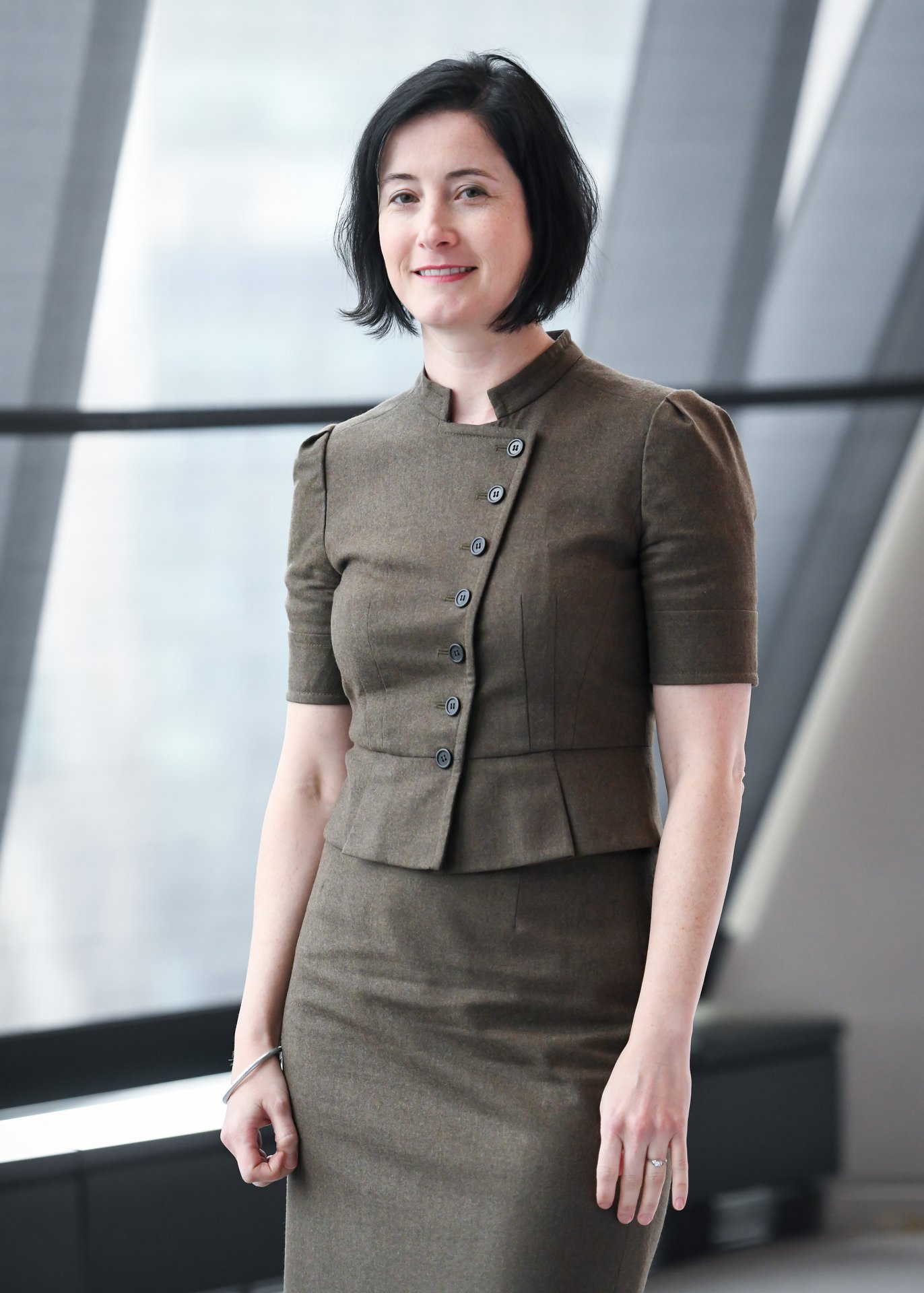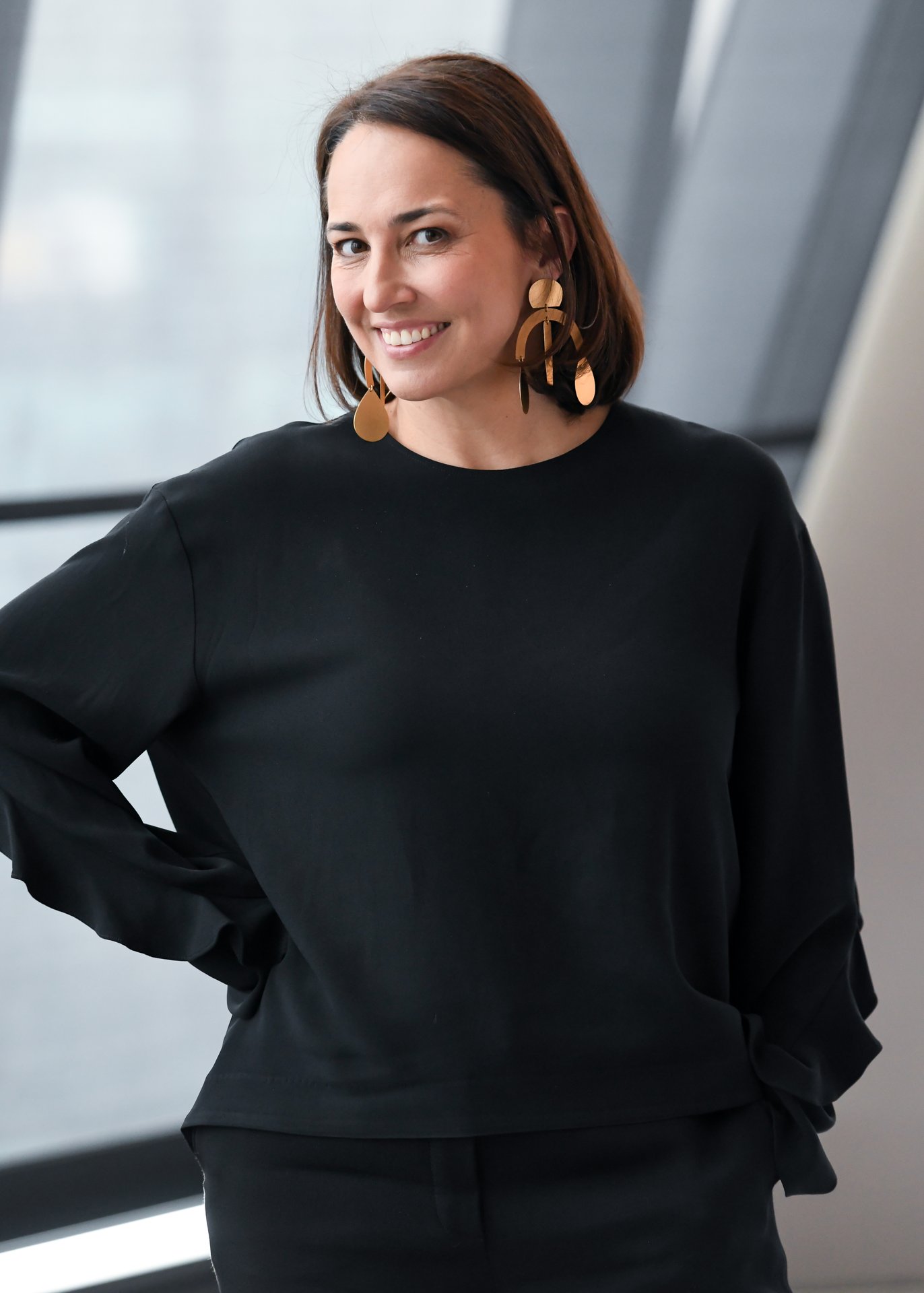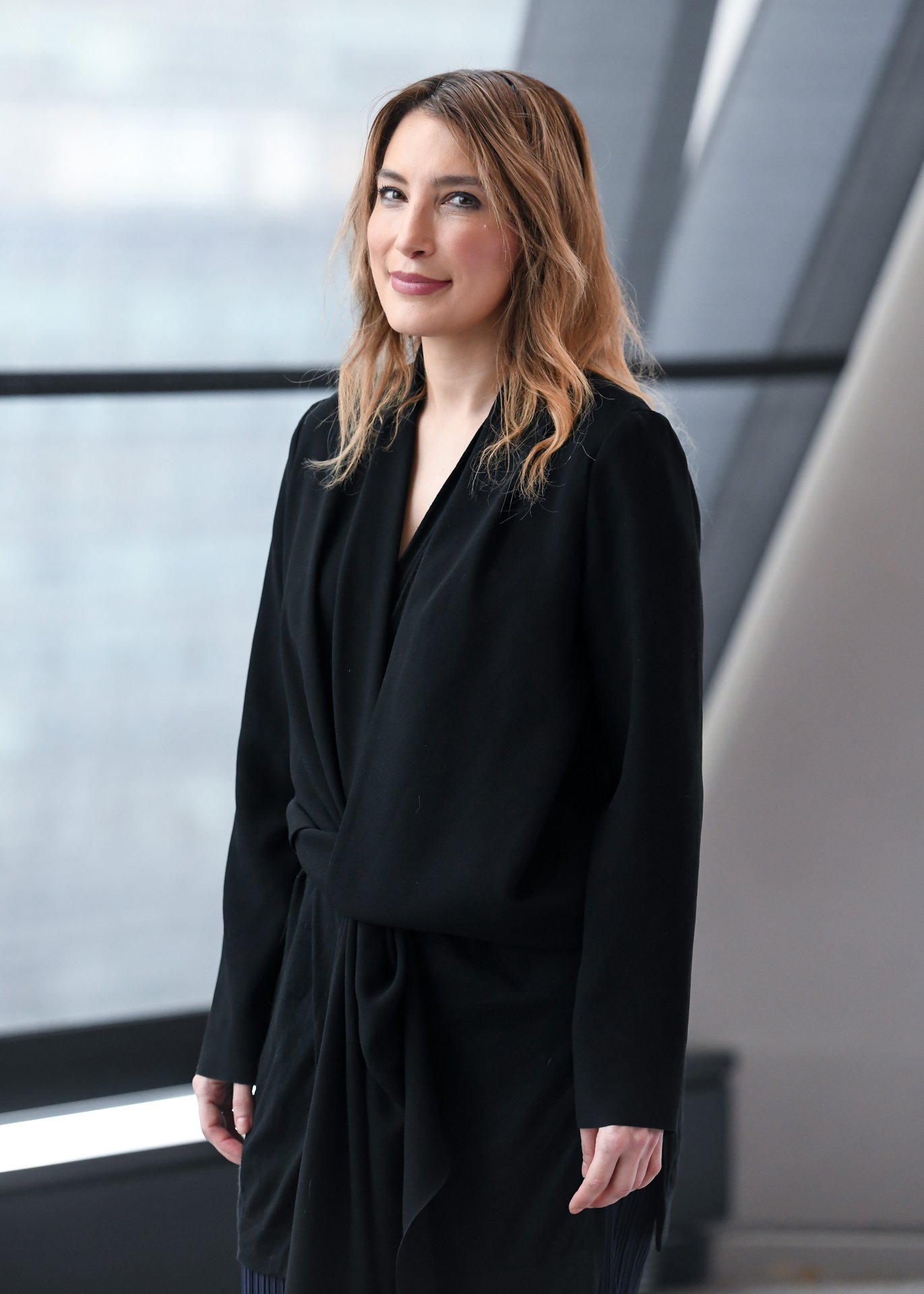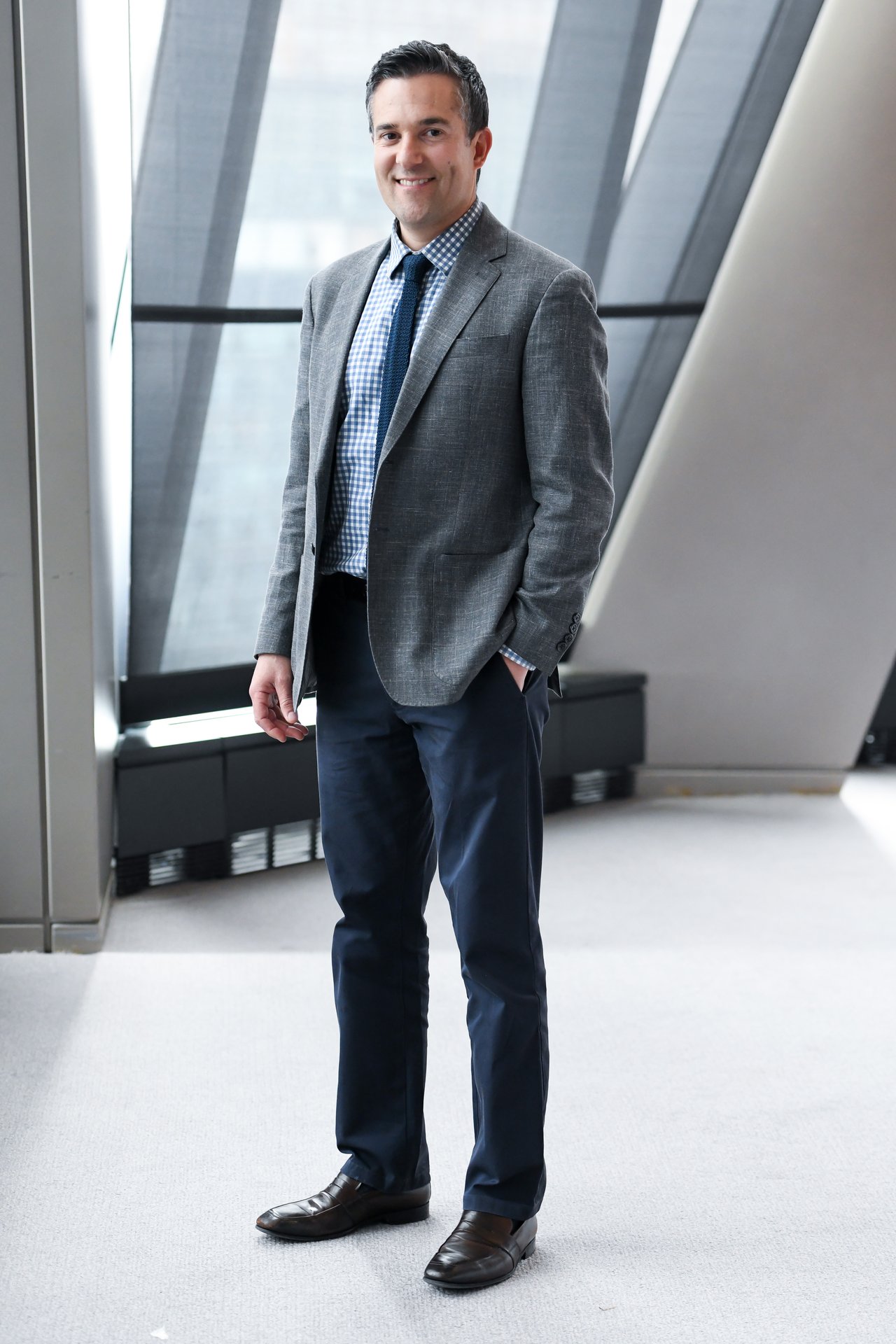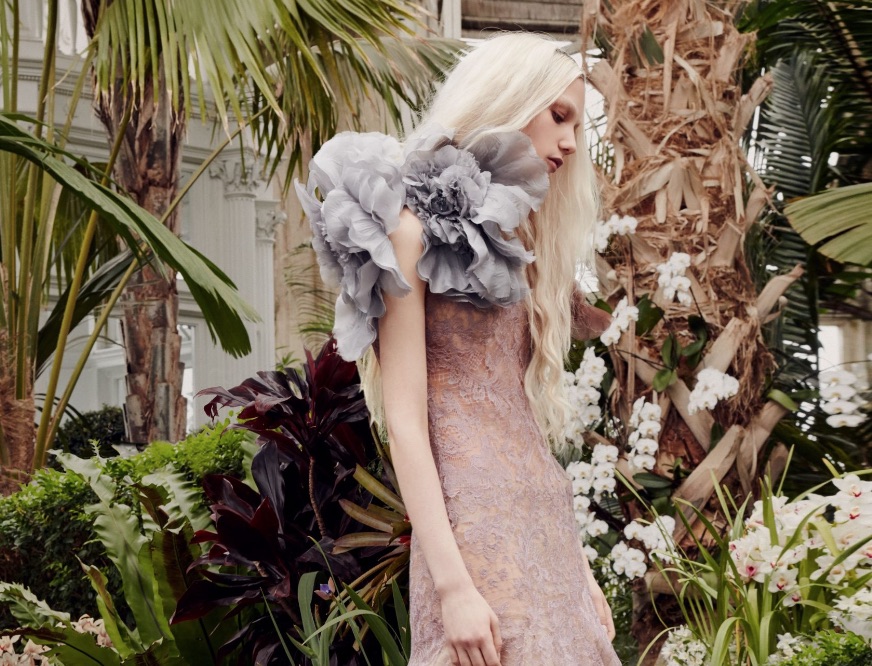Eco-friendly activewear label Girlfriend Collective’s sports bras and leggings are made with non-virgin polyester and nylon derived from post-consumer plastic bottles. “Back in 2005 you wouldn’t have the communication with the customer that we have today as a direct to consumer brand in the digital age,” Quang Din said. “We can communicate that everything you buy from us has a direct impact.”
With an aerial view of how consumers and the industry engage with sustainability, Marie Claire’s Anne Fulenwider and the Sustainable Apparel Coalition’s Director of Business Development Scott Miller are in a unique position. Since launching Marie Claire’s annual issue and forum dedicated to sustainability, Fulenwider and her staff have made a number of discoveries. “After polling our readers, we found that 85 percent of them want to buy sustainable,” she said. “But when you’re shopping, you still want something to fit, look cool, and make you feel good. Thank god we’re all past the thought that a sustainable dress is probably made of burlap!”
Two years ago—through a project Marie Claire produced in collaboration the National Resources Defense Council—Fulenwider learned that consumer concerns begins with food and beauty products. “That’s because you put it in and on your body, so the danger is immediate,” she expounded, pointing to fear as the driving force behind behavioral change in these spaces. Fulenwider ensured that conversations about responsibly consuming fashion don’t have to be fear-based as it has the ability to seduce. “You can’t browbeat anyone into buying an article of clothing,” she asserted.
Shortly after, Scott Miller elaborated on industry developments. “In 2009 Patagonia and Walmart got together to standardize how sustainability is measured,” he recounted. “This means measuring the environmental and social labor practices from raw material extraction all the way to end of use.” The Higg Index—a uniform self-assessment guide developed by the Sustainable Apparel Coalition in collaboration with over 250 organizations—was launched two years later.
Returning to the concept of circularity, Miller invites creatives to participate in an inspirational exercise. “Take a long walk in the forest and observe that there is no waste in the forest. Then schedule a tour at a recycling waste transfer station,” he said. “Get those two images in your head, and observe what is currently happening with all of these incredible materials that we as a society put so much effort, energy, and resources into. They’re discarded as waste. Nature doesn’t have waste. I think there’s inspiration all around us for solutions.”
In closing, the panelists offered advice smaller organizations at risk of becoming overwhelmed
by the pressure to become more sustainable. While Dinh encouraged brands to make the right decisions from the very beginning to avoid “the slippery slope of bad decisions,” Daly asked individuals as both consumers and professionals to face the question, “Where did this product come from and where will it go when I’m done with it?” For Hearst, the process begins by looking at the two values of a product: it’s monetary value and the cost that nature will pay for it.
“Sometimes, living in cities we forget that we are a part of nature,” she mused. “People always say, ‘let’s save the planet.’ I think, no, the planet will exist without us. We have to save humans.”


